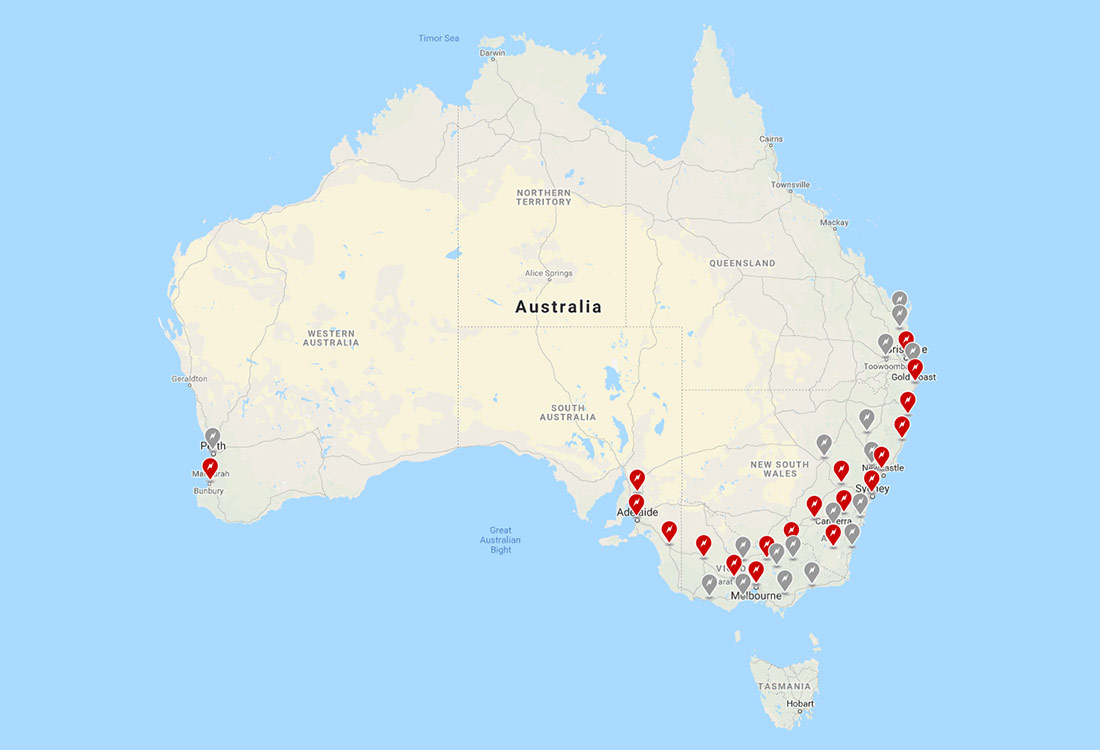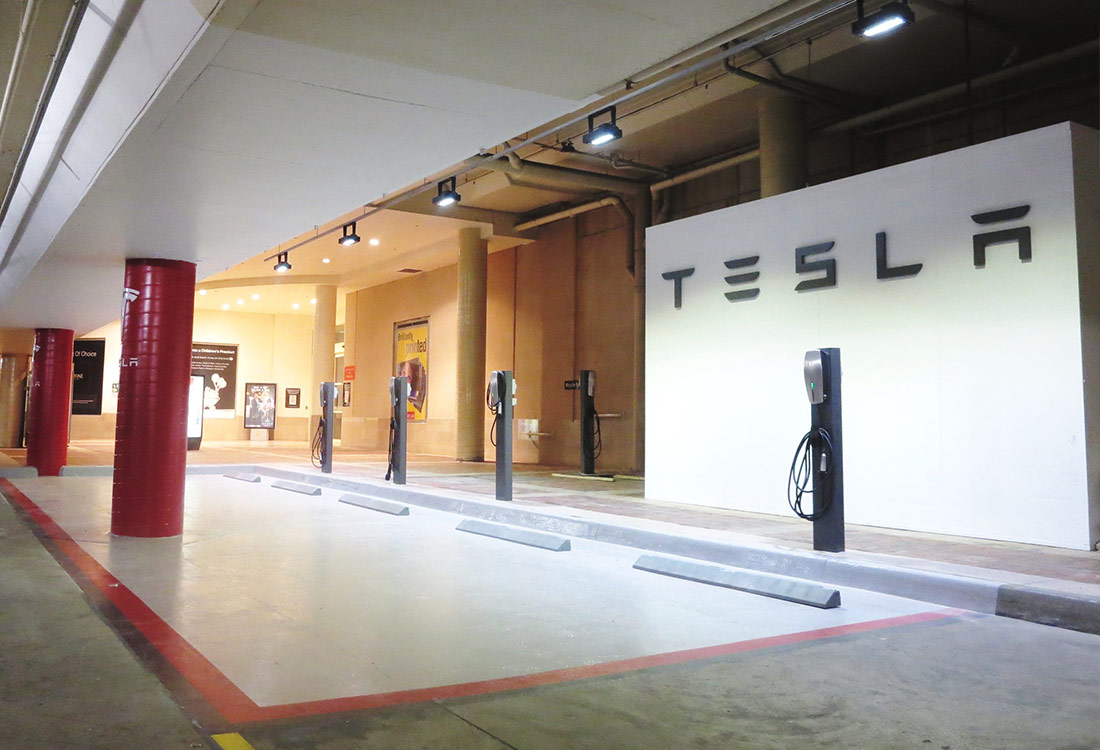Its latest plan is to add 18 more charging stations to link Victoria’s Great Ocean Road with Queensland’s Sunshine Coast, but Tesla has also announced its intention to install 500 high-speed Superchargers around Australia.
The additional charging points – from Broome to Bundaberg, and Townsville to Torquay – would give Tesla a substantial marketing advantage in the $100,000-plus EV market.
The Tesla charging network currently consists of 20 chargers as part of its ‘Supercharging’ regional and urban network, plus around 500 Tesla wall-mounted home and office installations.
All EV owners currently have access to almost 450 charging stations around Australia that have been installed by private, government and motoring organisations such as the automobile clubs.
Tesla owners can use adaptors to plug into these chargers but owners of non-Tesla EVs cannot plug into the Tesla chargers.
Based on the philosophy of ‘build it and they will come’, Tesla has become the only EV manufacturer to have an expanding proprietary charging station network and one that promises to be continued to provide increasing coverage around the country for its owners.
Its plan to have 500 Superchargers located around Australia is designed to give range comfort to Tesla owners, and the company is counting on the increased charging coverage to boost sales of its cars. The Superchargers only fit Tesla vehicles and are linked to each car’s vehicle identification number.
A Tesla spokesman for Australia said “most” owners would not be charged for using the Supercharger network and many could even use a borrowed reference code from another Tesla owner to access a free charge.
Early adopters of Tesla cars are likely to remain free of charge, especially allowing a quick charge that the spokesman said would be sufficient to “get from Melbourne to Sydney”.
For those who are charged, he said the cost would be 35 cents a kilowatt hour. In distance, that equates to about 4.8km – or $7.29 for 100km – for the Tesla Model S, compared with about $14 for a petrol car over 100km at 10 litres per 100 kilometres.
Tesla said that though the regional chargers would ensure its owners could travel easily between country towns, it recognised that the bulk of owners would charge at home or at the workplace.
The Tesla spokesman said the Supercharger network is complimented by the company’s “Destination Charging Network” of wall connectors installed in over 500 destinations nationally including hotels, resorts, shopping centres and secure parking locations.
The expensive construction of the charging network – Tesla refused to comment on the cost – looks encouraging for those in Australia who have hopes to join the global first-world EV expansion.
While the move by Tesla is seen by the Electric Vehicle Council of Australia as an important step in boosting EV numbers, so far no other manufacturer is building chargers.
And Tesla is one of the few EV manufacturer selling in Australia that has not called on the government for financial subsidies or lobbied for any ownership cost exemptions.
The Electric Vehicle Council of Australia CEO Behyad Jafari said Tesla’s move was important to the aim of boosting EV ownership. However, he admitted progress had been slow in getting the federal government to move on EVs.
He said there were no federal government-funded charge stations in Australia, with only the ACT and Queensland state governments currently having public EV charging points.
The ACT this week boosted its program of increasing government fleet EVs by announcing a $456,000 funding package to build 50 more charging stations on government land in the territory, adding to the existing network of 23.
Despite governments talking of reducing vehicle emissions and a future of EVs, the involvement of a state-territorial bodies in supplying infrastructure is unusual.
The bulk of the stations around Australia have been funded and installed by the automobile clubs such as the RAC in WA, RACQ in Queensland and RAA in South Australia.
The NRMA has committed $10 million to 40 charge stations that will begin installation next month, adding to the NSW’s 11 public chargers.
By Neil Dowling















 Read More: Related articles
Read More: Related articles

